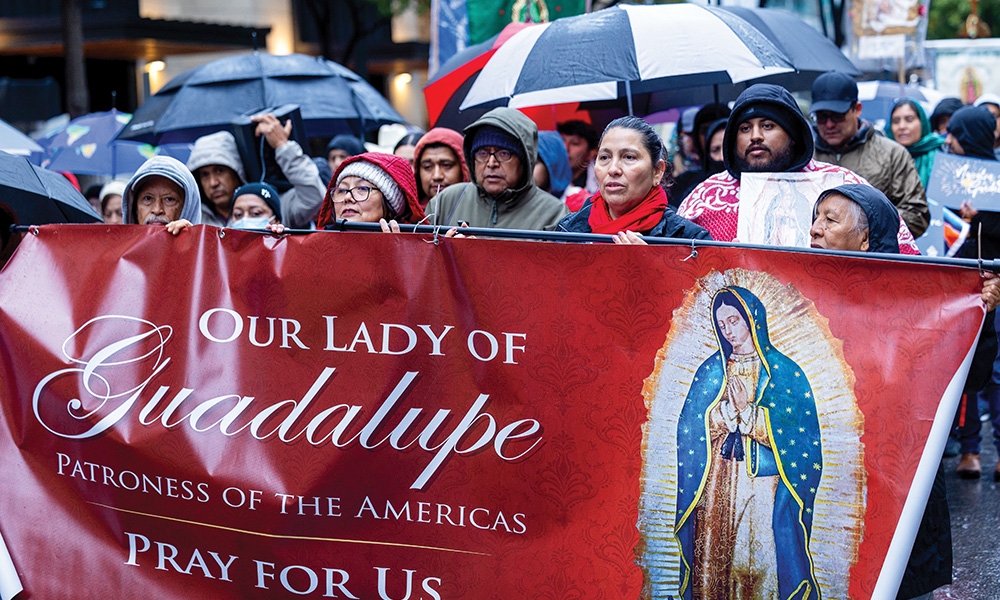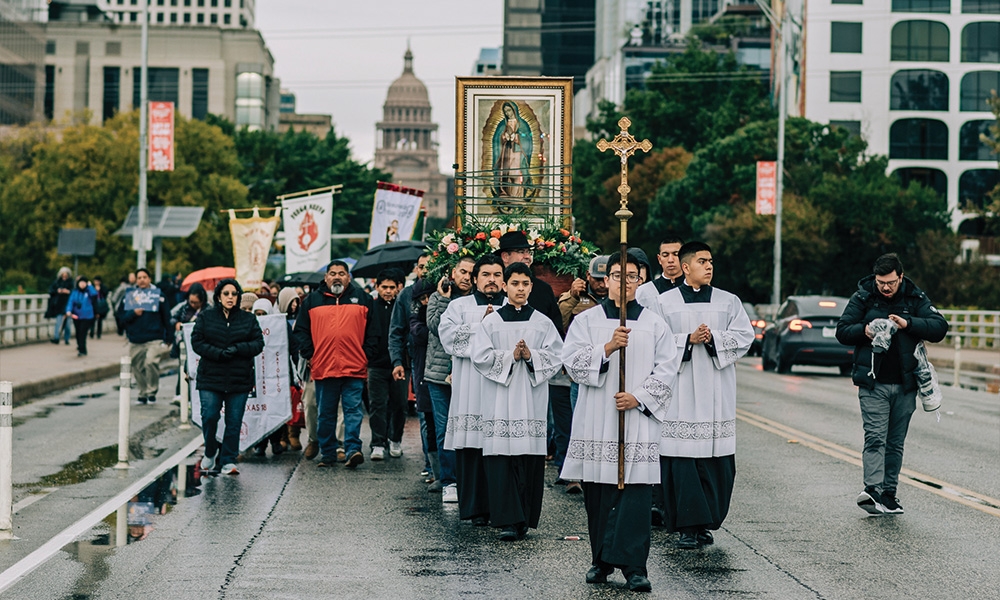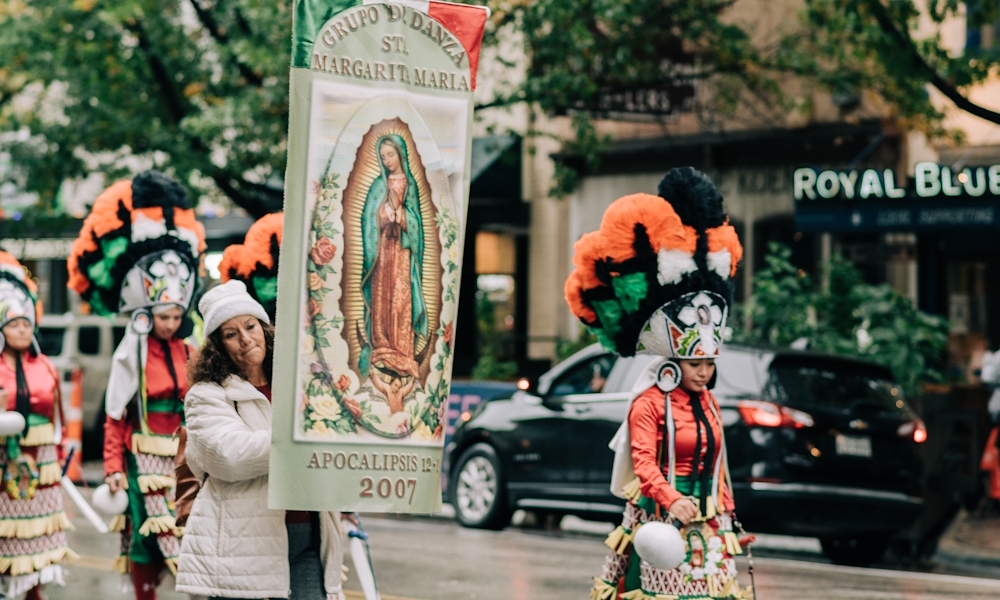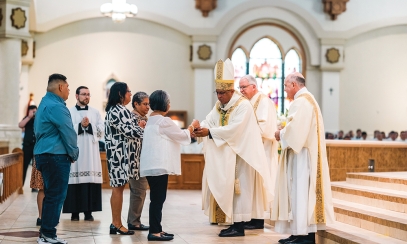
Join us for a multicultural witness of our Catholic faith, unity
The Diocese of Austin will host its 13th annual celebration in honor of Our Lady of Guadalupe on Dec. 6. Catholics of all cultures are invited to gather in a public demonstration of faith, unity and devotion. The celebration begins at 8 a.m. at St. Mary Cathedral in Austin. The procession will move through the streets of Austin, arriving at 10 a.m. at San José Parish in Austin. Participants, who are invited to dress in traditional attire, will sing hymns, pray the rosary in multiple languages, carry banners and perform Aztec liturgical dances. Mass will conclude the celebration.
The Diocese of Austin will host its 13th annual celebration in honor of Our Lady of Guadalupe on Dec. 6. Catholics of all cultures are invited to gather in a public demonstration of faith, unity and devotion. The celebration begins at 8 a.m. at St. Mary Cathedral in Austin. The procession will move through the streets of Austin, arriving at 10 a.m. at San José Parish in Austin. Participants, who are invited to dress in traditional attire, will sing hymns, pray the rosary in multiple languages, carry banners and perform Aztec liturgical dances. Mass will conclude the celebration.
Our Lady of Guadalupe is more than a beloved figure for Mexicans; she is also the patroness of the Americas and of the unborn, titles given by St. John Paul II. In the mestiza face of Our Lady who carries the life of Jesus in her womb, we are called to recognize the dignity of every conceived child, St. John Paul II wrote in his apostolic exhortation titled The Church in America.
The apparition of Our Lady occurred in December 1531 on Tepeyac Hill, near present-day Mexico City. At that time, the church's evangelization efforts were hindered by tensions between Spanish conquerors and native peoples. Indigenous communities faced oppression, and their culture was being rejected. Many mestizo children, fruits of sexual attacks against the indigenous, were marginalized or killed. In this setting of pain and division, Mary appeared as a unifying presence, offering love, protection and reconciliation.
She chose Juan Diego, an indigenous man, as her messenger, speaking to him in his native language and calling him “my little son.” Through a miraculous image imprinted on Juan Diego’s tilma, she left a lasting message of unity and maternal care. Her mestiza face tells us that she is the mother of all, and that, in the church, everybody should find familiar features that allow diverse ethnicities to feel at home. Her dress reflects the style of pregnant indigenous women and includes European flowers, representing the blending of cultures, while the unborn Jesus identifies himself with the mestizo children. The rays behind her point to the Aztec sun god, who, as seeds of the Gospel, prepared the indigenous people to receive the truth that Mary carries in her womb.
This image, preserved for nearly 500 years, continues to inspire. It reminds us that the Church in the Americas is intercultural and that we are all part of the family of God. Our Lady of Guadalupe’s maternal gaze is for everyone, especially the poor, marginalized and unborn.
This diocesan celebration is more than a cultural event; it is a public witness of our Catholic identity. It is an opportunity for all to come together and reflect the diverse yet unified body of Christ. Everyone is invited to participate and give joyful testimony of our shared faith.
For more information or to register your apostolic movement to be part of this celebration, visit www.austindiocese.org/celebration-guadalupe.
Dora Tobar is the director of Hispanic Ministry for the Diocese of Austin. She can be reached at (512) 949-2426 or dtobar@austindiocese.org.





